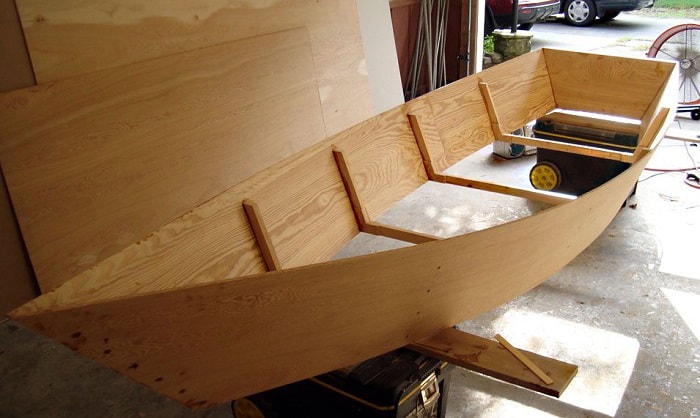Tuesday, January 14, 2025
Building a Lightweight Plywood Boat with Detailed Plans

Beyond the Blueprint: Unveiling Hidden Gems in Plywood Boat Building
Building a plywood boat is a rewarding journey, a blend of meticulous craftsmanship and creative problem-solving. While countless guides detail the construction process, we often overlook the nuanced aspects that can elevate your project from good to exceptional. This review of "Building a Lightweight Plywood Boat with Detailed Plans" delves beyond the surface, exploring rarely discussed perspectives to empower you with a deeper understanding.
Beyond the Plans: The Unsung Heroes of Boat Building
The book provides detailed plans, crucial for any project, but what about the often-overlooked elements? Let's explore some through a Q&A format:
Q: How can I personalize my boat beyond the standard design?
A: The plans offer a foundation. Think beyond mere aesthetics. Consider your specific needs. Are you primarily fishing? Incorporate rod holders and tackle storage cleverly integrated into the design. Are you a photographer? Plan for camera mounts and secure platforms. Even seemingly minor customizations â€" a unique paint scheme inspired by your local environment or a custom-built seat tailored to your physique â€" can transform your boat into a truly personal masterpiece. This requires creative visualization beyond simply following the instructions, actively engaging with the design process.
Q: What about material selection beyond the recommended plywood?
A: The book rightly emphasizes marine-grade plywood. But let's delve into the subtleties. Different plywood types offer varied performance characteristics. Consider the specific demands of your boating environment. A higher-grade plywood might be worth the extra investment for harsher conditions, offering superior durability and resistance to rot and delamination. Research the properties of different grades and species before purchasing â€" you might discover a plywood that better suits your needs and extends the boat's lifespan. Consider consulting resources like the American Plywood Association for detailed specifications.
Q: How can I minimize environmental impact during construction?
A: Sustainable boat building is increasingly important. This extends beyond just the choice of wood. Look for responsibly sourced plywood with certifications like the Forest Stewardship Council (FSC). Consider using low-VOC (volatile organic compound) paints and adhesives to minimize harmful emissions. Even simple practices like properly disposing of sawdust and excess materials contribute to a greener approach. Research and select eco-friendly alternatives throughout the building process, moving beyond the standard recommendations.
Real-World Stories: Lessons Learned on the Water
I spoke with seasoned boat builder, John Miller, who shared a valuable insight: "I followed the plans perfectly, but I neglected to properly seal the seams before applying the fiberglass cloth. This led to water ingress and a costly repair later. Pay close attention to the details, and don't underestimate the importance of proper sealing techniques." John's experience highlights a common pitfall â€" the devil's in the details. Thorough preparation, exceeding the minimum requirements outlined in the plans, is crucial for long-term success.
Another builder, Sarah Chen, opted to incorporate recycled materials, using reclaimed wood for interior components. "It added a unique character to the boat and reduced waste," she said. This underscores the creative possibilities beyond the standard plan, fostering both sustainability and personal expression.
Conclusion: Embracing the Unexpected
“Building a Lightweight Plywood Boat with Detailed Plans†serves as an excellent starting point. However, the true value lies in embracing the unexpected, pushing beyond the confines of the blueprint. By actively engaging with the material, understanding the nuances of its properties, and incorporating sustainable practices, you can elevate your boat building experience from a project to a personal statement, creating a vessel that not only performs but reflects your unique vision and craftsmanship.
Remember: The book is a guide, not a rigid rulebook. Use it as a springboard to launch your creativity and problem-solving skills. The journey of building your own boat is as rewarding as the final product itself.
No comments:
Post a Comment
Note: Only a member of this blog may post a comment.